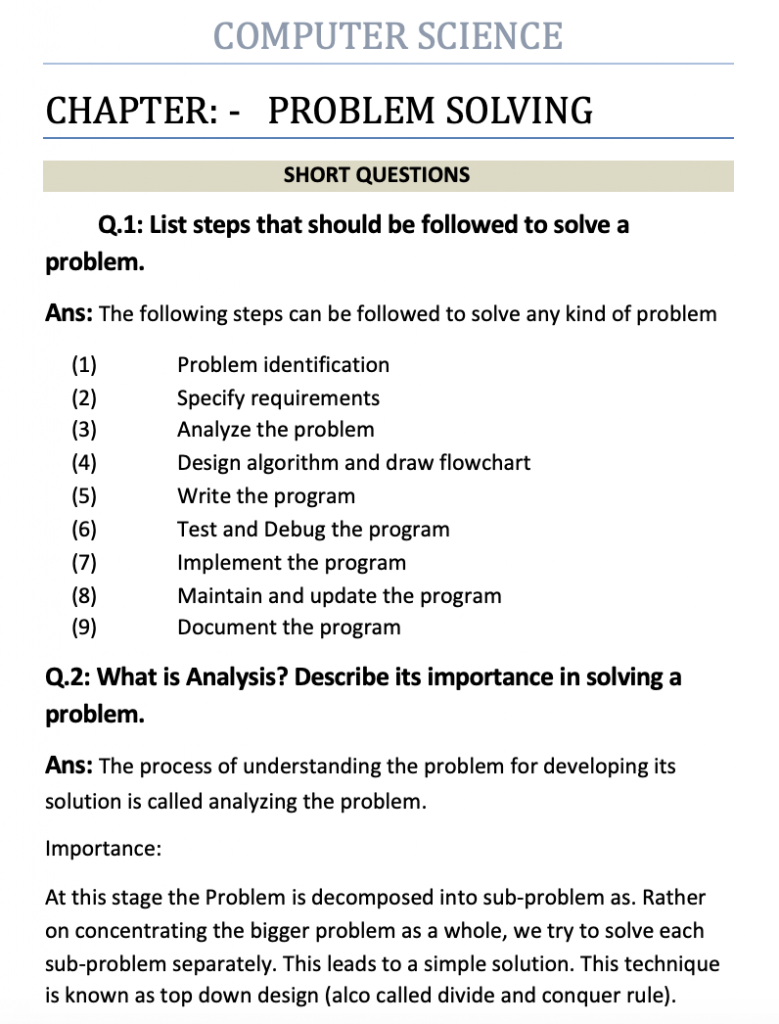Problem Solving in Computer Science
Summary:
Problem-solving is a crucial skill that can be developed by following a well-organized approach. In the realm of programming, problem-solving plays a significant role. To solve a problem effectively, it is important to follow a series of steps. Firstly, problem identification is essential, as it allows for careful observation and filtration of irrelevant information, focusing on the major areas of concern. After identifying the problem, specifying requirements becomes necessary to understand the user’s needs and expectations, forming the basis for suggesting a proper solution.
The next step involves analyzing the problem, broken down into subproblems. This analysis process enables a clearer understanding of the problem and facilitates adopting the top-down design or divide-and-conquer approach. By solving each sub-problem individually, a complex problem becomes more manageable. Once the analysis is complete, designing an algorithm and creating a flowchart is crucial to visualize the flow of data and the sequence of operations within the system. Writing the program follows, using the programming language’s syntax to translate the algorithm into executable code.
Testing and debugging the program are essential to ensure its functionality and accuracy. Runtime errors, such as illegal operations or division by zero, are detected during program execution.
Excerpt:
Problem Solving in Computer Science
COMPUTER SCIENCE
CHAPTER – PROBLEM SOLVING
SHORT QUESTIONS
Q.1: List steps that should be followed to solve a problem.
Ans: The following steps can be followed to solve any kind of problem
- Problem identification
- Specify requirements
- Analyze the problem
- Design an algorithm and draw a flowchart
- Write the program
- Test and Debug the program
- Implement the program
- Maintain and update the program
- Document the program
Q.2: What is Analysis? Describe its importance in solving a problem.
Ans: The process of understanding the problem for developing its solution is called analyzing it.
Importance:
At this stage, the Problem is decomposed into sub-problem. Rather than concentrating on the bigger problem, we solve each sub-problem separately. This leads to a simple solution. This technique is known as top-down design (divide and conquer rule).


Reviews